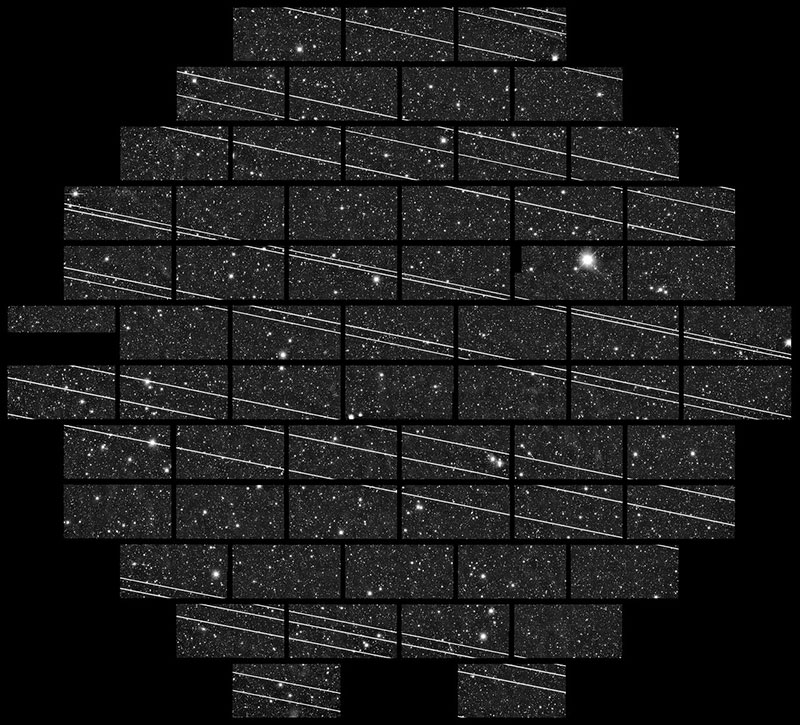Saving the sky from satellite constellations
The next online Worldwide AstroFest event on 8 April will tackle the threat to astronomy from swarms of small satellites. You can watch this series of talks and join the discussion on your phone, tablet or computer via Zoom webinar.
In April alone, SpaceX launched four Falcon 9 rockets, adding 240 satellites to its Starlink broadband internet network. The company has now launched 1,385 craft into this so-called ‘mega satellite constellation’ and it plans to launch thousands more. Another company, OneWeb, launched 36 satellites in April, bringing its total number of satellites to 146. It plans to launch another 36 later this month.
The United States’ Federal Communications Commission (FCC) has received license applications for over 81,000 satellites for Starlink, OneWeb and a proposed new network from Amazon.

The light reflected from these spacecraft and their radio signals are threatening to disrupt the work of professional and amateur astronomers. The satellite operators are trying to minimise the impact of these swarms of satellites but they cannot eliminate all possible interference.
At this special Worldwide AstroFest event, at 7:30pm BST (1830 GMT) on Thursday, 8th April 2021, you’ll find out more about this threat and what can be done to save our skies from these satellite swarms. Attendees can put questions to the speakers. The event will last approximately 90 minutes.
Speakers include:
Dr Jonathan McDowell, an astrophysicist at the Harvard-Smithsonian Center for Astrophysics and editor of Jonathan’s Space Report, an internet newsletter which provides technical details of satellite launches. A staff member of the Chandra X-ray Center, he studies black holes, quasars and X-ray sources in galaxies.
Dr Robert Massey, Deputy Executive Director & Press Officer at the Royal Astronomical Society, which organised a meeting between satellite operators and the astronomical community, to share the concerns of scientists, and to work on mitigation of the problem.
Dr Meredith Rawls, Research Scientist in the Department of Astronomy at the University of Washington who works with the Vera C. Rubin Observatory Legacy Survey of Space and Time (LSST) group, one of the observatories that could be affected by mega satellite constellations.
Nik Szymanek, Astronomy Now’s astro-imaging expert, will discuss how amateur astronomers can prevent the streaks of light from mega satellite constellations blighting their images.
